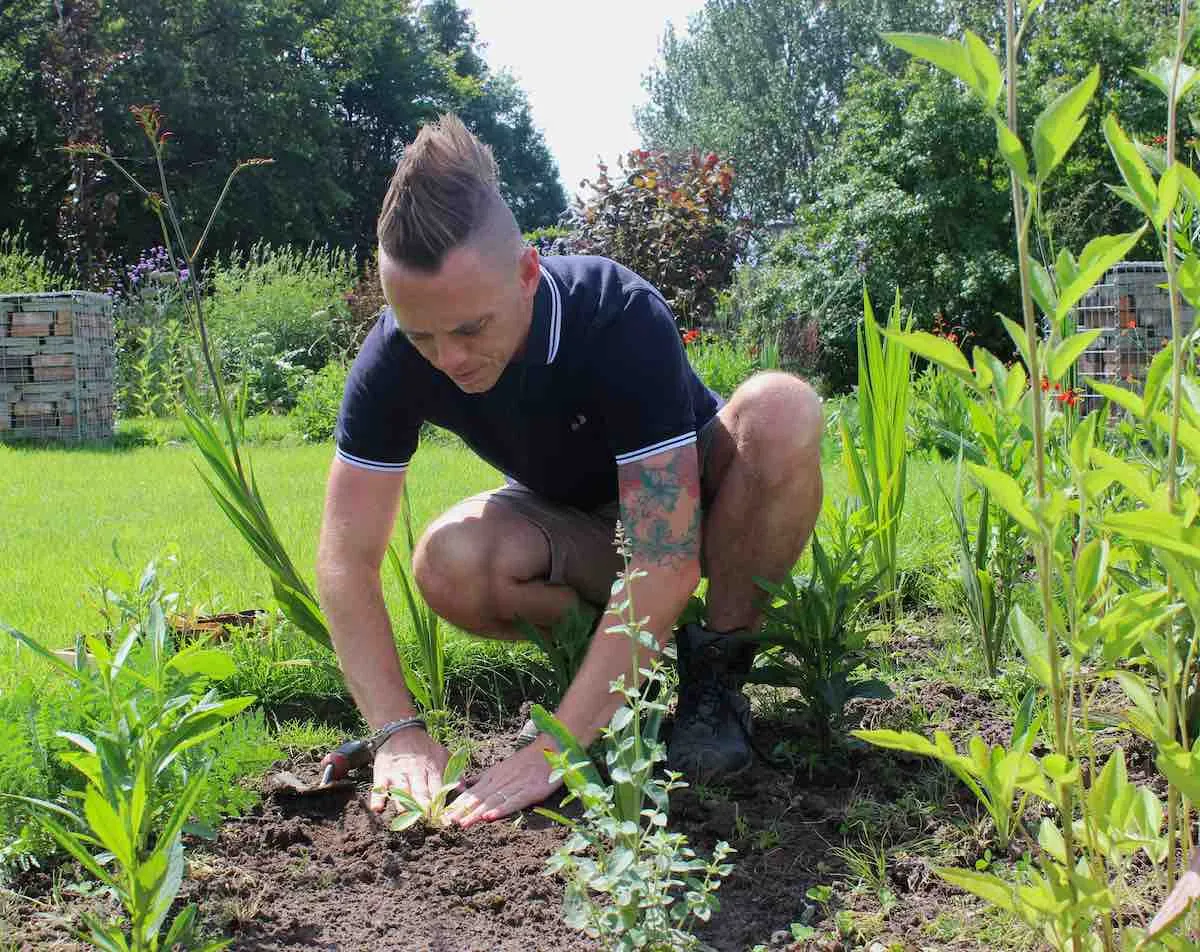Hi @claireloui79
Thanks for your comment about your nibbled Azalea, I've answered a similar question here, which may help.
It looks like either Vine weevil, which lays its eggs in the soil or leaf-cutter bees, which are harmless. However, I would put money on vine weevils; see my detailed guide here.
The best way to treat them is to either bring in more wildlife through ponds or plant more around the shrub to provide a habitat for beneficial insects or nematodes.
What Are Vine Weevil Nematodes?
Vine weevil nematodes are microscopic, soil-dwelling parasitic worms, specifically of the species Steinernema kraussei or Heterorhabditis bacteriophora. They’re completely harmless to humans, pets, and plants—but deadly to vine weevil grubs, which chew through plant roots and often go unnoticed until the damage is severe.
How Do Nematodes Work?
- Seek and destroy -Once applied to the soil, nematodes actively seek out vine weevil larvae by sensing carbon dioxide and heat given off by the grubs underground.
- Invasion time - When a nematode finds a vine weevil grub, it enters the larva's body through natural openings like the mouth or spiracles (tiny breathing holes).
- Release bacteria -Inside the grub, the nematode releases symbiotic bacteria, which multiply rapidly and kill the grub within 24–72 hours.
- Reproduce and spread - The nematodes then feed and reproduce inside the dead larva. After a few days, the next generation bursts out into the soil and goes looking for more victims—naturally spreading through the root zone.
Why Nematodes work on Vine Weevils
-
100% organic – No chemicals involved
-
Pet and wildlife safe – Won’t harm bees, birds, or beneficial insects
-
Targets the problem at root level – Literally
-
Easy to apply – Comes as a powder you mix with water and water onto soil
When and How to Apply
-
Best applied in spring (March–May) and autumn (August–October) when soil temps are above 5°C.
-
Water the soil well before and after application to keep it moist—nematodes need a damp environment to move.
-
Works best in pots, containers, and borders where infestations tend to build up.
Do let us know how you get on!
Lee Garden Ninja
Hi @claireloui79
Thanks for your comment about your nibbled Azalea, I've answered a similar question here, which may help.
It looks like either Vine weevil, which lays its eggs in the soil or leaf-cutter bees, which are harmless. However, I would put money on vine weevils; see my detailed guide here.
The best way to treat them is to either bring in more wildlife through ponds or plant more around the shrub to provide a habitat for beneficial insects or nematodes.
What Are Vine Weevil Nematodes?
Vine weevil nematodes are microscopic, soil-dwelling parasitic worms, specifically of the species Steinernema kraussei or Heterorhabditis bacteriophora. They’re completely harmless to humans, pets, and plants—but deadly to vine weevil grubs, which chew through plant roots and often go unnoticed until the damage is severe.
How Do Nematodes Work?
- Seek and destroy -Once applied to the soil, nematodes actively seek out vine weevil larvae by sensing carbon dioxide and heat given off by the grubs underground.
- Invasion time - When a nematode finds a vine weevil grub, it enters the larva's body through natural openings like the mouth or spiracles (tiny breathing holes).
- Release bacteria -Inside the grub, the nematode releases symbiotic bacteria, which multiply rapidly and kill the grub within 24–72 hours.
- Reproduce and spread - The nematodes then feed and reproduce inside the dead larva. After a few days, the next generation bursts out into the soil and goes looking for more victims—naturally spreading through the root zone.
Why Nematodes work on Vine Weevils
-
100% organic – No chemicals involved
-
Pet and wildlife safe – Won’t harm bees, birds, or beneficial insects
-
Targets the problem at root level – Literally
-
Easy to apply – Comes as a powder you mix with water and water onto soil
When and How to Apply
-
Best applied in spring (March–May) and autumn (August–October) when soil temps are above 5°C.
-
Water the soil well before and after application to keep it moist—nematodes need a damp environment to move.
-
Works best in pots, containers, and borders where infestations tend to build up.
Do let us know how you get on!
Lee Garden Ninja
 Lee Burkhill: Award Winning Designer & BBC 1's Garden Rescue Presenters Official Blog
Lee Burkhill: Award Winning Designer & BBC 1's Garden Rescue Presenters Official Blog



